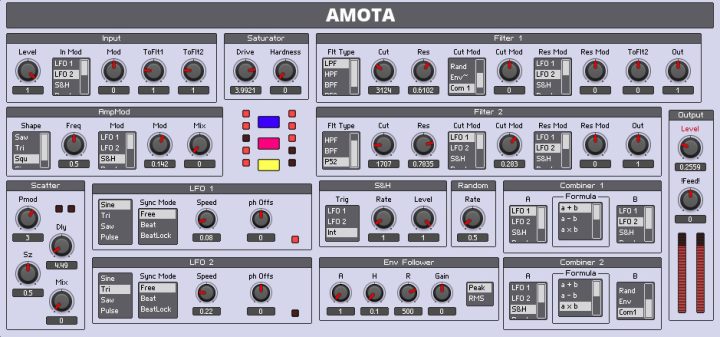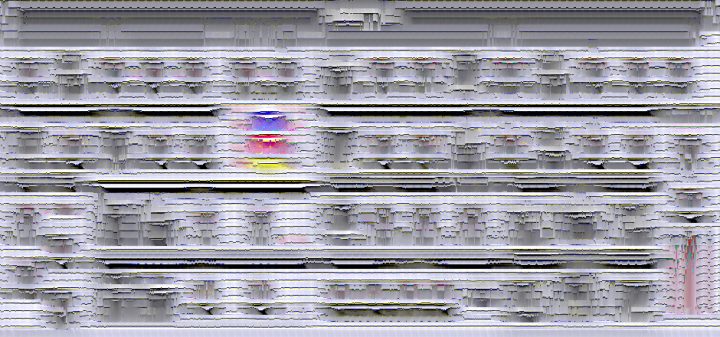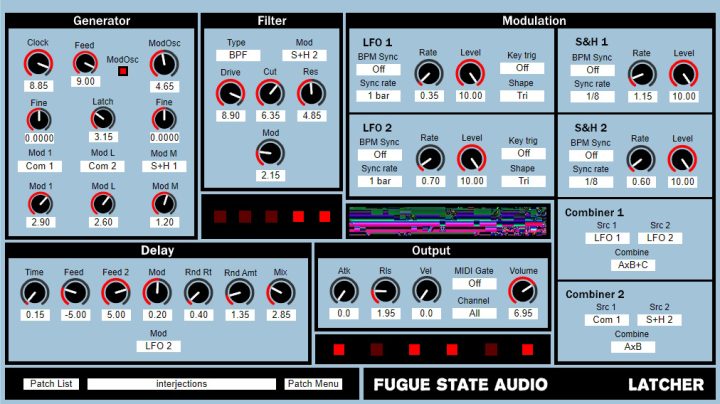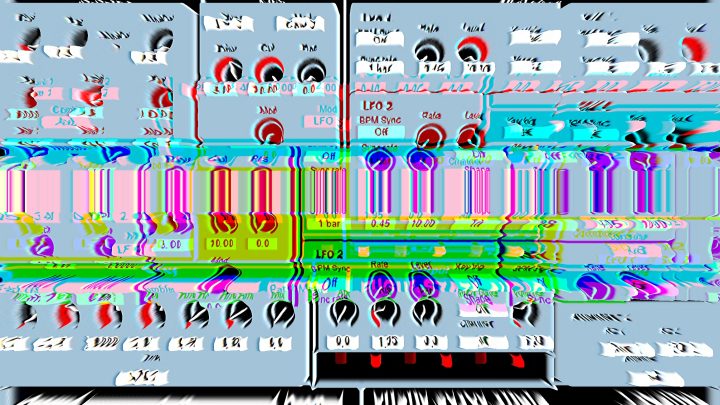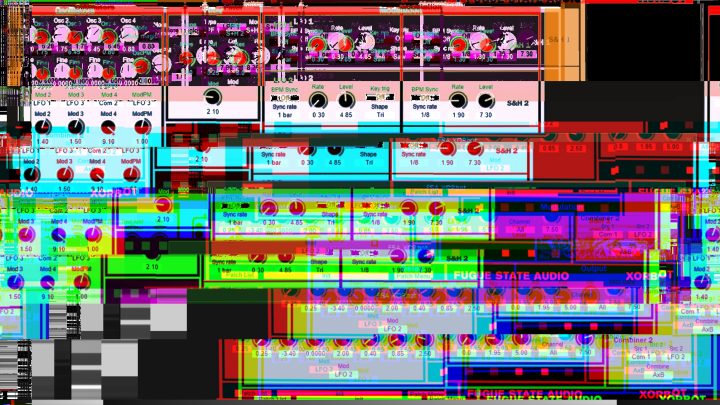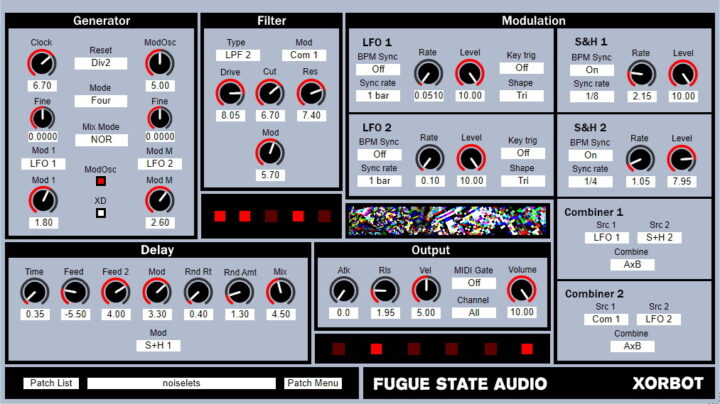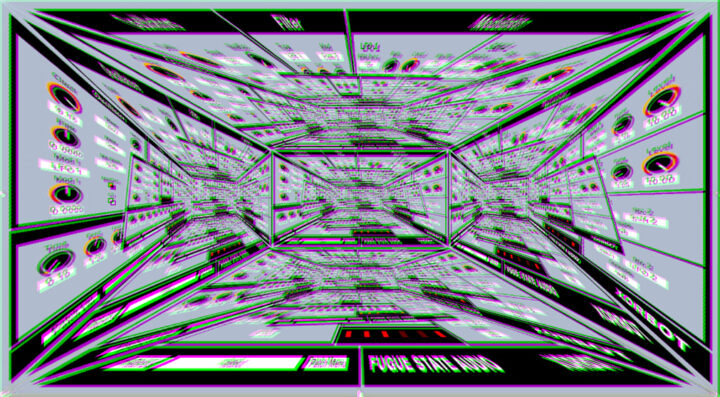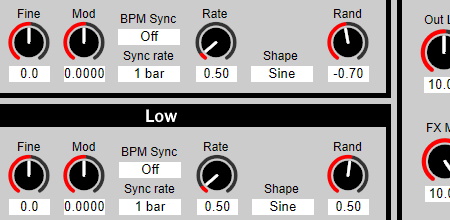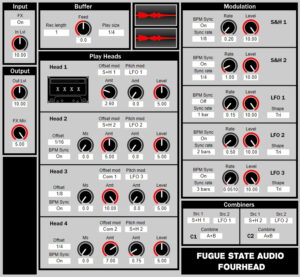Because one can never have too many filters.
AMOTA is a filter/distortion/mangler effect based mostly on amplitude modulation and analog-style filters. It is essentially the filter and most of the modulation sections from Noisebot RKV as an effect processor with a couple extra toys.
Available here or from the Reaktor User Library.
AMOTA (Reaktor FX) Demo
AMOTA is a filter/distortion/mangler effect based mostly on amplitude modulation and analog-style filters. It is essentially the filter and most of the modulation sections from Noisebot RKV (https://www.native-instruments.com/en/reaktor-community/reaktor-user-library/entry/show/14133/) as an effect processor with a couple extra toys. Available from the FSA website and the Reaktor User Library: https://www.native-instruments.com/en/reaktor-community/reaktor-user-library/all/all/all/7606117/ Thanks for checking it out!
